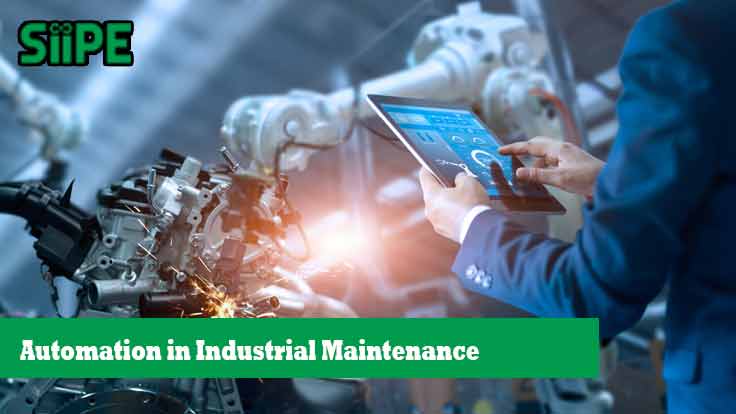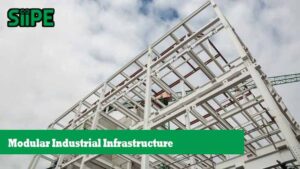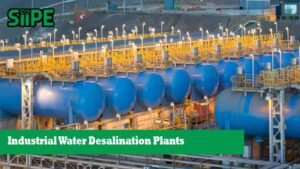In today’s era of Industry 4.0, automation has permeated nearly every aspect of manufacturing and production. One critical area that is undergoing significant transformation is industrial maintenance. Traditionally labor-intensive and reactive, maintenance is now evolving into a proactive, data-driven discipline thanks to automation technologies.
From predictive analytics to robotics and artificial intelligence, automation is changing the way factories maintain their equipment, reduce downtime, and maximize operational efficiency.
What is Industrial Maintenance Automation?
Industrial maintenance automation refers to the use of automated systems and technologies to monitor, analyze, and maintain machinery and infrastructure in manufacturing and production environments. Instead of waiting for equipment to fail or relying solely on scheduled maintenance, automated maintenance systems use real-time data and smart tools to keep operations running smoothly.
Examples include:
-
Predictive maintenance systems using IoT sensors and AI to forecast equipment failures
-
Maintenance robots and drones for inspections or repairs in hard-to-reach areas
-
CMMS (Computerized Maintenance Management Systems) with automation features
-
Digital twins to simulate and monitor asset performance in real time
Why Automation is Crucial in Maintenance
Traditional maintenance approaches—especially reactive and scheduled maintenance—often lead to:
-
Unplanned downtime
-
Increased operational costs
-
Wasted labor hours
-
Inefficient asset utilization
Automated maintenance overcomes these issues by improving:
-
Accuracy: Systems can detect abnormalities invisible to human senses
-
Speed: Issues are addressed before they escalate
-
Safety: Workers avoid dangerous environments
-
Productivity: Machines run longer with fewer interruptions
Types of Maintenance Automation
-
Predictive Maintenance (PdM)
This is the cornerstone of automated industrial maintenance. Using sensors, IoT devices, and machine learning, systems predict when a machine is likely to fail, allowing maintenance to occur just in time.
Benefits:
-
Reduced unplanned downtime
-
Extended equipment lifespan
-
Lower maintenance costs
-
-
Condition-Based Monitoring (CBM)
CBM involves continuously monitoring parameters like temperature, vibration, pressure, or oil levels. When thresholds are breached, alerts are triggered.
-
Automated Work Order Systems
CMMS platforms now automate scheduling, tracking, and closing work orders. When an issue is detected, a ticket is automatically generated and assigned to a technician.
-
Robotics in Maintenance
Maintenance robots are used in sectors like oil & gas, nuclear, or aerospace to perform dangerous inspections and repairs.
Examples include:
-
Crawler robots for pipe inspections
-
Drones for structural analysis
-
Robotic arms for repetitive mechanical tasks
-
-
Digital Twins and Simulation
A digital twin is a virtual replica of a physical asset. It uses real-time data to simulate how equipment is functioning and helps engineers predict future problems before they occur.
Real-World Applications
Manufacturing Plants
Companies like Siemens, GE, and Bosch use predictive maintenance to track machine wear and avoid unplanned shutdowns.
Oil & Gas Industry
Drones and remote inspection robots are widely used to monitor pipelines and offshore rigs—improving safety and cutting labor costs.
Automotive Industry
Assembly line robots equipped with sensors notify technicians before mechanical failures happen, streamlining production.
Utilities and Energy
Automation helps monitor equipment like turbines and transformers, and alerts operators of overheating, wear, or imbalance.
Advantages of Automation in Maintenance
| Benefit | Impact |
|---|---|
| Reduced Downtime | Proactive alerts prevent unexpected equipment breakdowns |
| Lower Costs | Early detection avoids costly repairs or replacements |
| Improved Safety | Robots handle high-risk inspections |
| Enhanced Accuracy | Data-driven insights outperform manual inspections |
| Optimized Resource Allocation | Staff focus on strategic tasks, not manual check-ups |
Challenges in Implementation
Despite its benefits, automation in maintenance comes with challenges:
-
High Initial Investment
Sensors, platforms, and integration with legacy systems can be costly. -
Skill Gap
Maintenance personnel may require training in data analysis, IoT, and AI. -
Data Overload
Without the right tools, the volume of data from sensors can be overwhelming. -
Cybersecurity Risks
Internet-connected maintenance systems are vulnerable to cyberattacks. -
Integration Issues
Many companies still use legacy equipment that isn’t compatible with modern automation tools.
How to Get Started
If you’re considering introducing automation in your maintenance processes, here’s a step-by-step approach:
-
Audit Your Existing Equipment
Identify which assets are critical and could benefit most from automation. -
Invest in IoT Sensors
Start small with vibration or temperature sensors on key machines. -
Choose a CMMS Platform
Opt for a system with automation features and a user-friendly interface. -
Train Your Team
Empower your maintenance staff with training in analytics and automation tools. -
Scale Gradually
Expand based on ROI. Use results to justify further investment.
Future Outlook: Maintenance 5.0
The future of industrial maintenance will go beyond automation into hyper-personalization, autonomy, and intelligence. Think systems that can:
-
Self-heal via nanotechnology
-
Auto-deploy drones for instant diagnostics
-
Use AI to optimize entire maintenance schedules autonomously
Technologies like edge computing, augmented reality, and blockchain will also find their way into the maintenance ecosystem.
Automation is reshaping the world of industrial maintenance, turning it from a reactive chore into a strategic advantage. By leveraging smart technologies like IoT, AI, robotics, and CMMS platforms, industries can reduce downtime, improve safety, and optimize operations.
Though implementation has its hurdles, the long-term benefits of automated maintenance are too significant to ignore. As we move deeper into the age of Industry 4.0—and soon Industry 5.0—embracing automation will no longer be optional; it will be essential for survival and success.











